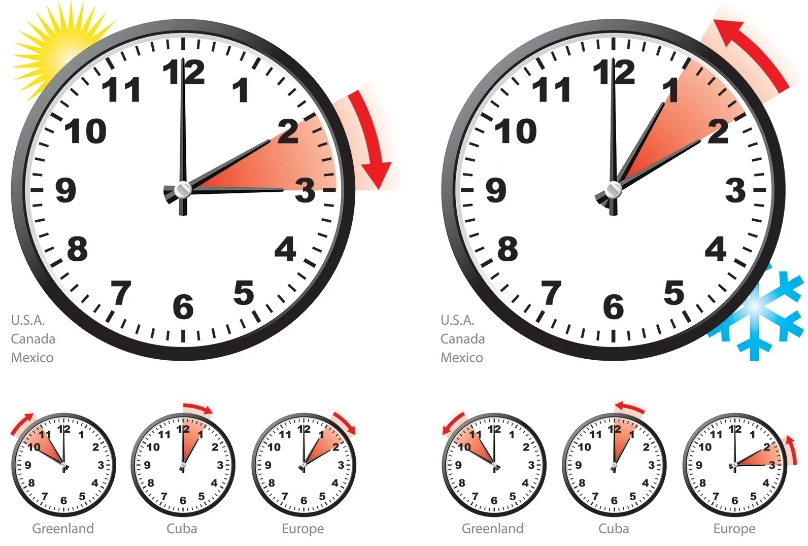Don’t forget to adjust your time as Canadian Daylight Saving Time approaches in 2024!
It’s been a really warm winter in Toronto this year, and the days are set to get longer as temperatures continue to rise with the arrival of spring. Starting next week, it will officially be spring because Daylight Saving Time is here!
Millions of Canadians will then turn their clocks forward one hour at 2 a.m. this Sunday, March 10th. After 1:59 a.m., it jumps straight to 3 a.m. While this change means people will lose an hour of sleep, it also heralds the arrival of longer daylight hours, bringing the hope of spring to everyone.
At present, most of the electronic devices have been equipped with automatic time-setting function, winter and summer time will switch by itself, you do not need to manually adjust the watch, but if the partners use mechanical watches or mechanical clocks, then we must remember to adjust the time before going to bed on the night of 9 March.
After Daylight Saving Time, the time difference between each region of Canada and China is as follows:
Eastern Time – China: 12 hours
(Time difference between Toronto and Beijing)
Central Time – China: 13 hours
Mountain Time – China: 14 hours
Pacific Time – China: 15 hours
(Time difference between Vancouver and Beijing)
What is Daylight Saving Time
Daylight Saving Time (DST) is a time-system adjustment that lasts from March to November and is designed to allow much of Canada to enjoy more sunshine during the spring and summer months. However, not all areas of Canada follow Daylight Saving Time, such as the Yukon, most of Saskatchewan, and some areas of Quebec, Ontario, and British Columbia, which maintain standard time throughout the year. The introduction of Daylight Saving Time began in 1908 and was originally proposed by New Zealand entomologist George Hudson to increase the amount of daylight available to him to find and observe insects.
Controversy over Daylight Saving Time
Despite the original intent of Daylight Saving Time (DST), which was designed to maximise the use of summer daylight hours and extend the hours of daylight at the end of the workday, the benefits of this time-system adjustment remain controversial. With the ongoing discussion of the pros and cons of DST, several Canadian provinces have expressed a desire to abolish the 100-year-old practice, but the implementation of this change continues to face a number of challenges and delays, in part waiting for U.S. states that are in the same time zone as it is to take the first step.
In recent years, the United States and Canada, Ontario, B.C., Alberta, have passed the relevant bill, allowing the abolition of daylight saving time system. But the United States and Ontario bill also clearly stipulates that want to formally adjust, must be Quebec, Ontario, and New York 3 large areas all unified to land, so in the three major areas of the unified policy before the partners should remember to adjust the clock in advance, to avoid missing important arrangements and plans due to the adjustment of time Oh!












